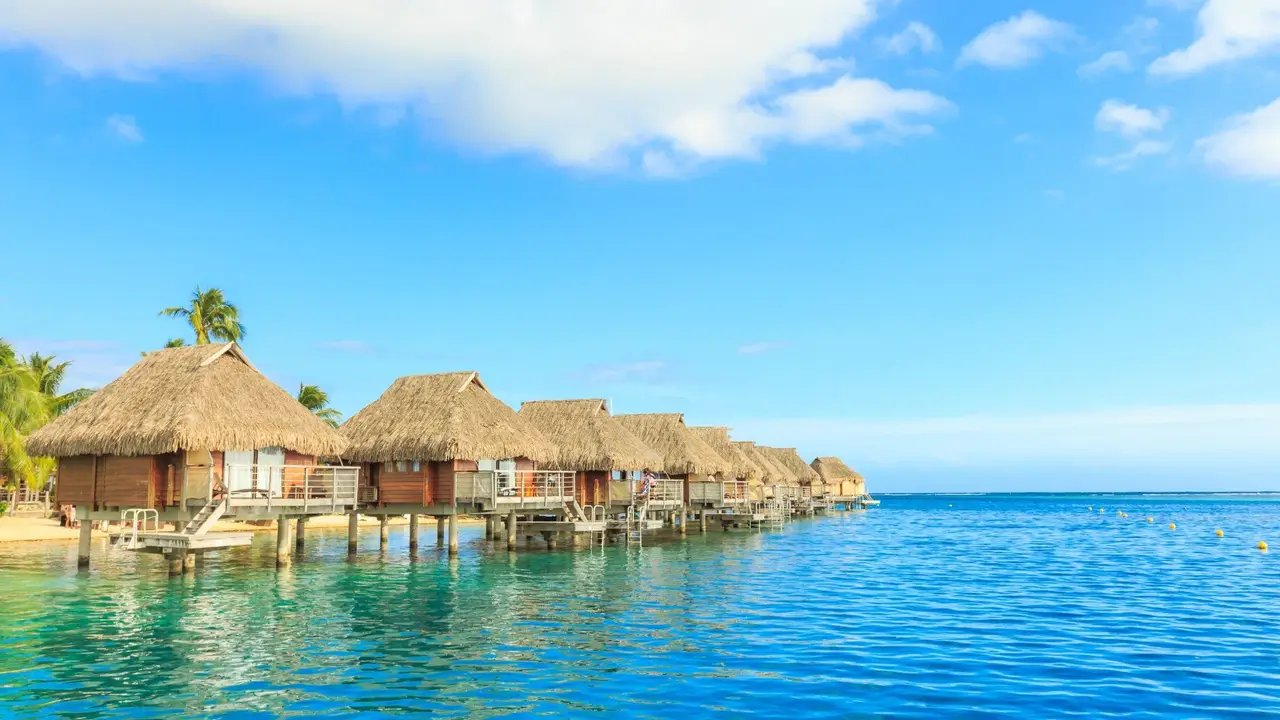Best Scuba Diving for Underwater Photography
Find the ideal dive locations with perfect conditions and subjects for stunning underwater photography.

Introduction to Underwater Photography Destinations
So, you've got the bug, huh? The one where you see a vibrant coral reef or a majestic manta ray and all you can think about is capturing that moment forever. Underwater photography is an incredible way to document your dives and share the magic of the ocean with others. But let's be real, not all dive spots are created equal when it comes to getting that perfect shot. You need good visibility, abundant marine life, interesting topography, and often, calm conditions. This guide is all about helping you find those sweet spots around the globe that are practically begging to be photographed.
Raja Ampat Indonesia A Photographer's Dream
If there's one place that consistently tops the list for underwater photographers, it's Raja Ampat, Indonesia. This archipelago in West Papua is often called the 'Amazon of the Seas' due to its unparalleled biodiversity. We're talking about more species of fish and coral than almost anywhere else on Earth. The sheer variety means you'll never run out of subjects, whether you're into wide-angle reefscapes or intricate macro shots.
Why Raja Ampat Excels for Underwater Photography
- Unmatched Biodiversity: From pygmy seahorses to massive manta rays, the variety is astounding. You can spend an entire dive in one spot and still not see everything.
- Healthy Coral Reefs: The reefs here are pristine and vibrant, offering incredible backdrops for your photos. Think colorful soft corals, massive hard coral formations, and anemones teeming with clownfish.
- Visibility: While it can vary, visibility is generally excellent, often exceeding 20-30 meters (65-100 feet), which is crucial for clear shots.
- Currents: While some sites have strong currents, these often bring in the big stuff and nutrients, making for dynamic photographic opportunities. Plus, many dive guides are experts at positioning you for the best shots.
Recommended Gear for Raja Ampat Photography
For Raja Ampat, you'll want a versatile setup. A good wide-angle lens is essential for capturing the vast reefscapes and large pelagics. Think something like a 16-35mm or a fisheye lens. For macro, a 60mm or 100mm lens will serve you well for those tiny critters. Don't forget your strobes! Two powerful strobes are almost a necessity to bring out the true colors of the reef. A good focus light will also be invaluable for macro subjects.
Palau Micronesia Wreck and Shark Photography
Palau is another gem, especially if you're into dramatic wide-angle shots, shark photography, and historical wreck diving. Located in Micronesia, Palau offers a different kind of photographic experience compared to Raja Ampat, focusing more on large animal encounters and unique underwater topography.
Palau's Photographic Highlights
- Shark City: Palau is famous for its healthy shark populations, particularly grey reef sharks. Sites like Blue Corner are renowned for shark action, providing incredible opportunities for wide-angle shark photography.
- WWII Wrecks: For history buffs and wreck photographers, Palau has numerous well-preserved WWII wrecks, offering eerie and atmospheric subjects.
- Jellyfish Lake: While not a dive site, the unique Jellyfish Lake offers a surreal snorkeling experience perfect for capturing ethereal shots of millions of stingless jellyfish.
- Blue Holes and Caves: The dramatic underwater topography, including stunning blue holes and intricate cave systems, provides unique compositional elements for your photos.
Gear Considerations for Palau
A wide-angle lens is paramount here. You'll want to capture the vastness of the reefs, the schools of sharks, and the impressive wreck structures. A fisheye lens can be particularly effective for the blue holes and large subjects. For strobes, again, two are ideal to properly light up those wide scenes. If you plan on shooting the wrecks, a powerful video light can also be useful for illuminating interiors.
Cozumel Mexico Clear Waters and Reefs
Moving to the Caribbean, Cozumel, Mexico, is a fantastic choice for underwater photography, especially for those who appreciate crystal-clear waters and vibrant reef systems. The island is known for its drift diving, which allows you to effortlessly glide along stunning walls and coral gardens.
Why Cozumel is Great for Photographers
- Exceptional Visibility: Cozumel boasts some of the best visibility in the world, often exceeding 30 meters (100 feet). This is a huge advantage for underwater photography, ensuring sharp and clear images.
- Healthy Reefs and Walls: The Mesoamerican Barrier Reef, the second-largest barrier reef system in the world, offers stunning coral formations, sponges, and a diverse array of reef fish. The dramatic wall dives provide excellent opportunities for wide-angle shots.
- Macro Opportunities: While known for its wide-angle appeal, Cozumel also has plenty of macro subjects if you look closely, including various nudibranchs, crabs, and shrimp.
- Easy Diving: The drift diving style means less effort, allowing you to focus more on your photography.
Recommended Photography Gear for Cozumel
Both wide-angle and macro setups work well in Cozumel. A wide-angle lens will allow you to capture the expansive reef walls and schools of fish. For macro, a 60mm or 100mm lens will help you isolate smaller subjects. Given the excellent visibility, you might find that natural light photography is more feasible here, but strobes will always enhance colors and reduce backscatter.
Lembeh Strait Indonesia Macro Photography Heaven
If your passion lies in the weird, wonderful, and often tiny creatures of the ocean, then the Lembeh Strait in Indonesia is your ultimate destination. This narrow stretch of water off the coast of North Sulawesi is world-renowned as the capital of 'muck diving' and macro photography.
Lembeh Strait's Unique Photographic Appeal
- Unrivaled Macro Subjects: This is where you'll find critters you didn't even know existed: flamboyant cuttlefish, mimic octopuses, hairy frogfish, various nudibranchs, and countless species of rare and unusual invertebrates.
- Muck Diving Environment: The volcanic black sand slopes might not look appealing at first glance, but they are the perfect camouflage for these masters of disguise, making them easier to spot and photograph.
- Dedicated Dive Guides: Resorts in Lembeh specialize in macro photography and employ highly skilled dive guides who have an uncanny ability to spot even the most camouflaged creatures.
- Calm Conditions: The strait is generally calm, making it easy to stabilize your camera and focus on tiny subjects.
Essential Gear for Lembeh Macro Photography
For Lembeh, a dedicated macro setup is non-negotiable. A 60mm or 100mm macro lens is a must. Consider adding a diopter or wet macro lens for even greater magnification. Two strobes are crucial for lighting up these small subjects and creating dramatic black backgrounds. A good focus light is also incredibly important for finding and illuminating tiny critters in the often-dark environment.
Galapagos Islands Ecuador Wildlife Photography Above and Below
The Galapagos Islands offer a truly unique and unparalleled wildlife photography experience, both above and below the water. While the diving can be challenging due to strong currents and cooler temperatures, the rewards are immense, especially for wide-angle and large animal photography.
Galapagos Photographic Opportunities
- Large Pelagics: This is the place for hammerhead sharks (often in massive schools), Galapagos sharks, whale sharks (seasonal), manta rays, and eagle rays.
- Marine Iguanas: Witness and photograph the world's only marine lizards feeding underwater.
- Sea Lions: Playful and curious sea lions are almost guaranteed to interact with divers, providing incredible photo opportunities.
- Unique Ecosystem: The blend of cold and warm currents creates a unique ecosystem with species found nowhere else on Earth.
Gear Recommendations for Galapagos
A robust wide-angle setup is essential for the Galapagos. A fisheye lens or a wide rectilinear lens (e.g., 16-35mm) will be your best friend for capturing the large schools of sharks and the vast underwater landscapes. Due to the often-darker conditions and strong currents, powerful strobes are highly recommended. Consider a sturdy housing and possibly a dome port for wide-angle shots. A dry suit or thick wetsuit is also advisable due to the cooler water temperatures.
Product Recommendations for Underwater Photography
Let's talk gear! Having the right tools can make a huge difference in your underwater photography journey. Here are some specific product recommendations across different price points and use cases.
Entry-Level Compact Cameras for Beginners
If you're just starting out, a compact camera with a good underwater housing is an excellent way to dip your toes into underwater photography without breaking the bank. These are generally easy to use and produce surprisingly good results.
- Olympus Tough TG-6:
- Description: This camera is a favorite among divers for its ruggedness and excellent macro capabilities. It's waterproof to 15m (50ft) without a housing, but you'll want the PT-059 housing for deeper dives.
- Use Case: Perfect for casual divers who want to capture good quality photos and videos without the complexity of a larger system. Great for both wide-angle and macro with optional accessories.
- Pros: Excellent macro mode, durable, good image quality for a compact, wide range of accessories (wet lenses, strobes).
- Cons: Small sensor limits low-light performance, fixed lens.
- Estimated Price (Camera + Housing): $700 - $900 USD
- Canon PowerShot G7 X Mark III:
- Description: A more advanced compact with a larger 1-inch sensor, offering better image quality and low-light performance than the TG-6. Requires a dedicated underwater housing from brands like Fantasea or Nauticam.
- Use Case: For beginners who want higher image quality and more manual control, but still prefer a compact form factor.
- Pros: Larger sensor, good video capabilities, more manual controls, excellent image quality.
- Cons: More expensive, requires a separate housing, not as rugged as the TG-6 without housing.
- Estimated Price (Camera + Housing): $1,200 - $1,800 USD
Mid-Range Mirrorless Cameras for Enthusiasts
Mirrorless cameras offer a great balance of image quality, versatility, and portability. They are a popular choice for enthusiasts looking to step up their underwater photography game.
- Sony Alpha a6700 (or similar APS-C mirrorless):
- Description: Sony's APS-C mirrorless line offers excellent image quality, fast autofocus, and good video capabilities. Paired with a dedicated underwater housing (e.g., Nauticam, Ikelite, Sea&Sea), it becomes a powerful underwater tool.
- Use Case: Ideal for serious hobbyists who want interchangeable lenses for both wide-angle and macro, and superior image quality compared to compacts.
- Pros: Excellent image quality, fast autofocus, good dynamic range, wide selection of lenses, relatively compact for an interchangeable lens system.
- Cons: Can be complex for beginners, requires significant investment in housing and ports, battery life can be an issue.
- Estimated Price (Camera + Housing + Port): $3,000 - $5,000 USD (body only, lenses extra)
- Olympus OM-D E-M1 Mark III (or similar Micro Four Thirds):
- Description: Micro Four Thirds cameras offer a smaller sensor but excellent image stabilization and a vast array of high-quality, compact lenses. Olympus cameras are known for their robust build and great features for underwater use.
- Use Case: Great for photographers who prioritize portability and a wide selection of specialized macro and wide-angle lenses.
- Pros: Excellent image stabilization, compact lenses, good macro capabilities, robust build, good video.
- Cons: Smaller sensor than APS-C/Full Frame, can be noisy at high ISOs.
- Estimated Price (Camera + Housing + Port): $2,800 - $4,500 USD (body only, lenses extra)
Professional Full-Frame Cameras for Advanced Users
For the ultimate in image quality, low-light performance, and creative control, full-frame mirrorless cameras are the way to go. These are serious investments but deliver unparalleled results.
- Sony Alpha a7R V (or similar high-resolution full-frame):
- Description: Sony's high-resolution full-frame cameras offer incredible detail, dynamic range, and low-light performance. Paired with top-tier lenses and housings, they are capable of producing gallery-quality images.
- Use Case: Professional photographers, serious enthusiasts, and anyone who demands the absolute best image quality and flexibility.
- Pros: Unmatched image quality, excellent low-light performance, superb dynamic range, professional-grade video.
- Cons: Very expensive, large and heavy system, complex to operate, requires significant investment in high-quality lenses and ports.
- Estimated Price (Camera + Housing + Port): $6,000 - $10,000+ USD (body only, lenses extra)
- Nikon Z8 (or similar professional full-frame):
- Description: Nikon's professional mirrorless cameras offer robust build quality, excellent ergonomics, and superb image quality. They are a strong contender for serious underwater photographers.
- Use Case: Similar to the Sony a7R V, for professionals and advanced users who need top-tier performance and reliability.
- Pros: Excellent image quality, robust build, great ergonomics, strong video capabilities.
- Cons: High cost, large system, requires dedicated professional housings.
- Estimated Price (Camera + Housing + Port): $6,000 - $10,000+ USD (body only, lenses extra)
Underwater Strobes and Video Lights
No matter what camera you choose, external lighting is crucial for bringing out colors and reducing backscatter underwater.
- Inon S-2000 (Strobe):
- Description: A popular compact and powerful strobe, great for compact camera users and even some mirrorless setups. Offers good light output and reliable performance.
- Use Case: General purpose strobe for compact and smaller mirrorless systems.
- Estimated Price: $500 - $600 USD
- Sea&Sea YS-D3 DUO (Strobe):
- Description: A more powerful and versatile strobe, suitable for a wide range of cameras from compacts to full-frame. Known for its wide beam angle and consistent output.
- Use Case: Enthusiast to professional use, excellent for both wide-angle and macro.
- Estimated Price: $800 - $1,000 USD
- Keldan Luna 8 LA-V (Video Light):
- Description: A high-end video light known for its incredible brightness, wide beam, and excellent color rendering.
- Use Case: Professional video production, or as a powerful focus light for still photography.
- Estimated Price: $1,500 - $2,000 USD
Accessories for Enhanced Photography
- Wet Macro Lenses (e.g., Nauticam CMC-1/CMC-2, Inon UCL-165M67):
- Description: These lenses attach to the front of your port and allow for greater magnification, perfect for super macro shots.
- Use Case: Essential for dedicated macro photographers, especially in places like Lembeh.
- Estimated Price: $300 - $600 USD
- Wet Wide-Angle Lenses (e.g., Nauticam WWL-1B, Inon UWL-H100):
- Description: These lenses increase your field of view, allowing you to capture more of the scene, especially useful for compact cameras.
- Use Case: Great for compact camera users who want to shoot wide-angle, or for mirrorless/DSLR users who want an even wider perspective.
- Estimated Price: $400 - $1,500 USD
- Tray and Arms System:
- Description: A sturdy tray provides a stable platform for your camera and housing, while arms allow you to position your strobes or video lights precisely.
- Use Case: Essential for any external lighting setup, provides stability and flexibility.
- Estimated Price: $200 - $800 USD (depending on brand and complexity)
Comparing Different Photography Setups and Their Best Use Cases
Choosing the right setup depends heavily on your budget, your skill level, and what you primarily want to photograph. Let's break down the different approaches.
Compact Camera Systems (e.g., Olympus TG-6 with Housing)
- Pros: Most affordable entry point, relatively small and lightweight for travel, easy to learn, excellent for casual shooting and surprisingly good macro.
- Cons: Limited low-light performance, less control over depth of field, fixed lens means less versatility for specialized shots.
- Best Use Case: Beginners, casual divers, snorkelers, travelers who want a simple yet capable system. Great for general reef scenes and close-up macro.
Mirrorless Camera Systems (e.g., Sony a6700, Olympus E-M1 Mark III with Housing)
- Pros: Significantly better image quality than compacts, interchangeable lenses offer huge versatility (dedicated macro, wide-angle, fisheye), more manual control, good video capabilities.
- Cons: More expensive, larger and heavier than compacts, steeper learning curve, requires more accessories (ports, gears).
- Best Use Case: Enthusiast photographers, those looking to specialize in either macro or wide-angle, divers who want to grow their skills and system over time. Excellent for capturing detailed macro and expansive wide-angle scenes.
Full-Frame Camera Systems (e.g., Sony a7R V, Nikon Z8 with Housing)
- Pros: Best possible image quality, exceptional low-light performance, incredible dynamic range, professional-grade video, ultimate creative control.
- Cons: Very expensive, largest and heaviest systems, most complex to operate, requires significant investment in high-end lenses and ports.
- Best Use Case: Professional underwater photographers, advanced enthusiasts who demand the absolute best, those shooting for publications or large prints. Ideal for capturing stunning wide-angle landscapes, detailed macro, and high-quality video in challenging conditions.
Tips for Improving Your Underwater Photography
No matter where you dive or what gear you have, these tips will help you get better shots.
Get Close to Your Subject
This is probably the most important rule in underwater photography. The more water between your lens and your subject, the more light is absorbed and scattered, leading to dull, hazy images. Get as close as you can without disturbing marine life. This will improve color, contrast, and sharpness.
Use External Strobes or Video Lights
Even in clear water, colors disappear quickly underwater. External strobes (for stills) or video lights (for video and focus) are essential for bringing back the vibrant reds, oranges, and yellows that are lost at depth. Position them carefully to avoid backscatter (light reflecting off particles in the water).
Master Your Buoyancy
Good buoyancy control is not just for safety; it's crucial for photography. Being able to hover motionless allows you to compose your shot, focus, and avoid stirring up sediment. It also helps you avoid damaging the reef.
Shoot Upwards
Whenever possible, try to shoot slightly upwards, using the water surface or the blue water as a clean background. This helps to isolate your subject and avoid distracting elements on the reef. It also often provides better lighting.
Understand Light and Exposure
Light behaves differently underwater. Learn about ambient light (natural light from the sun) and artificial light (from your strobes/lights). Understand how aperture, shutter speed, and ISO affect your exposure. For most underwater photography, you'll want a fast shutter speed to freeze motion, a relatively high aperture for depth of field, and a low ISO to minimize noise.
Practice, Practice, Practice
Like any skill, underwater photography takes practice. Don't get discouraged if your first few dives don't yield perfect results. Review your photos, learn from your mistakes, and keep experimenting. The more you dive with your camera, the more intuitive it will become.
Respect Marine Life
Always prioritize the well-being of marine life and the environment. Never touch, harass, or disturb animals for a photo. Maintain a safe distance and be mindful of your fins and gear. A great photo is never worth harming the ocean.
Conclusion on Underwater Photography Destinations and Gear
Whether you're dreaming of wide-angle reefscapes in Raja Ampat, dramatic shark encounters in Palau, crystal-clear drift dives in Cozumel, or the bizarre critters of Lembeh Strait, there's a perfect dive destination out there for your underwater photography aspirations. And with the right gear, from a simple compact to a professional full-frame system, you can capture the incredible beauty of the underwater world. Remember, the best camera is the one you have with you, and the best photo is the one that tells a story. So grab your gear, refine your skills, and dive into the amazing world of underwater photography.
:max_bytes(150000):strip_icc()/277019-baked-pork-chops-with-cream-of-mushroom-soup-DDMFS-beauty-4x3-BG-7505-5762b731cf30447d9cbbbbbf387beafa.jpg)






